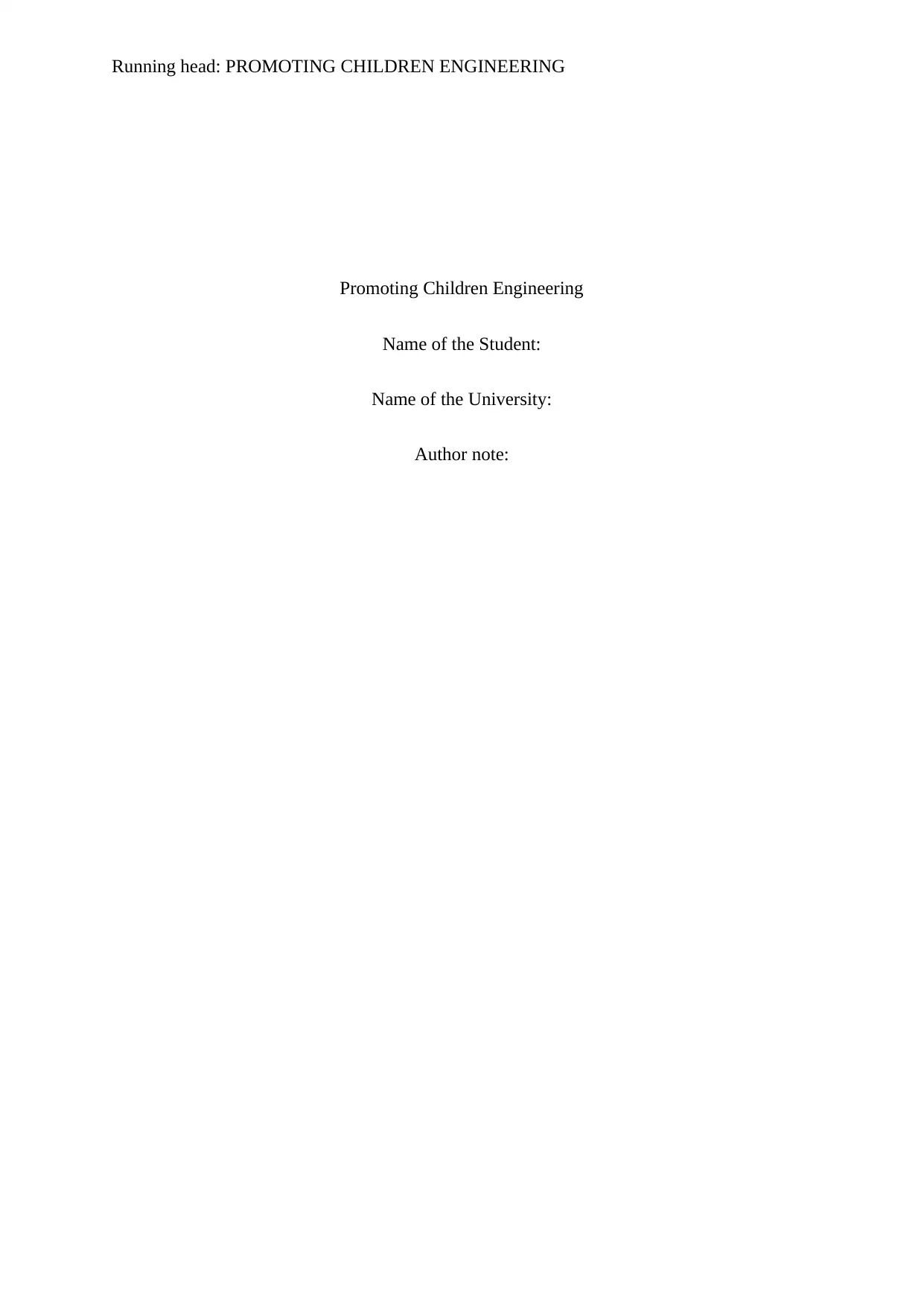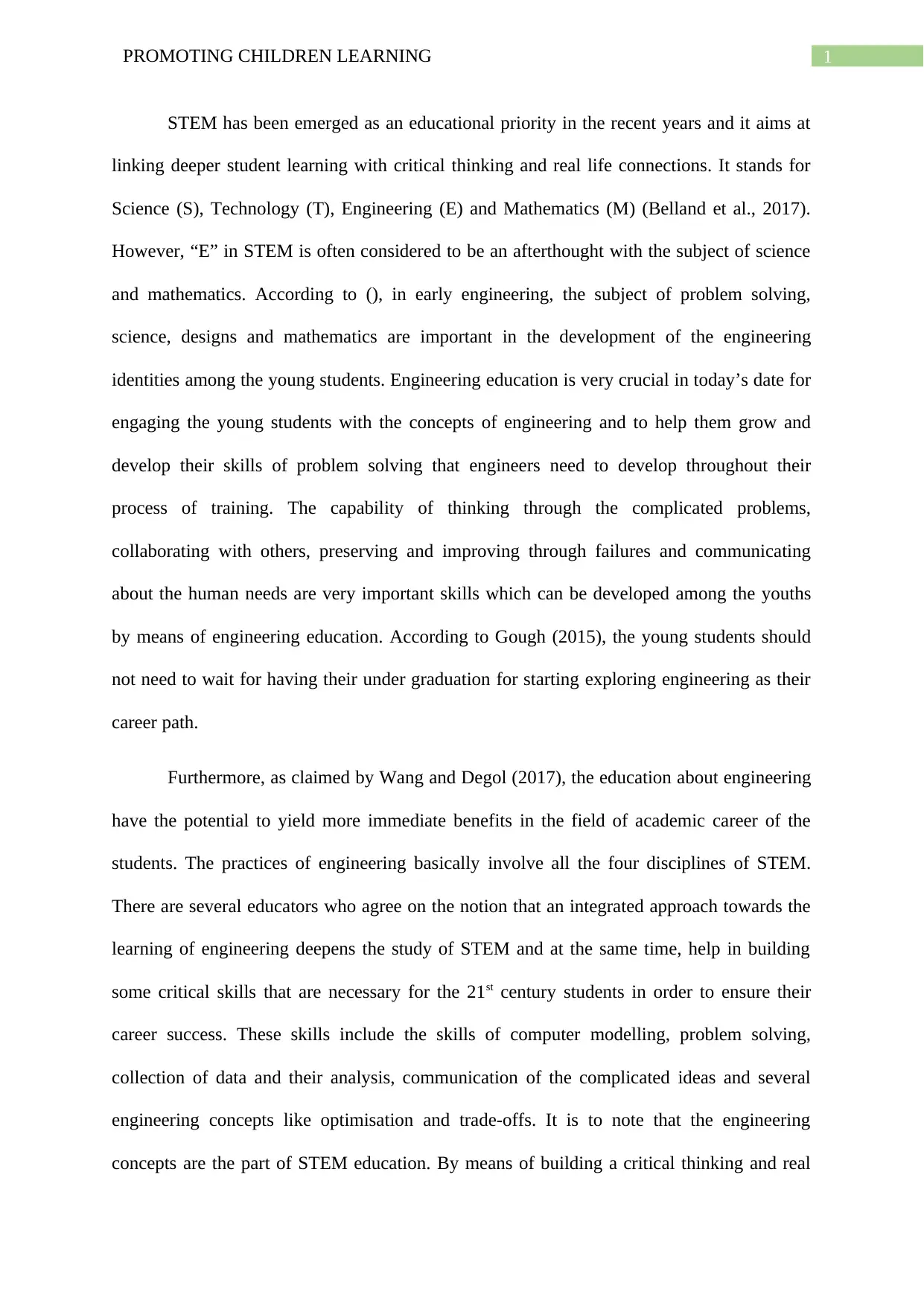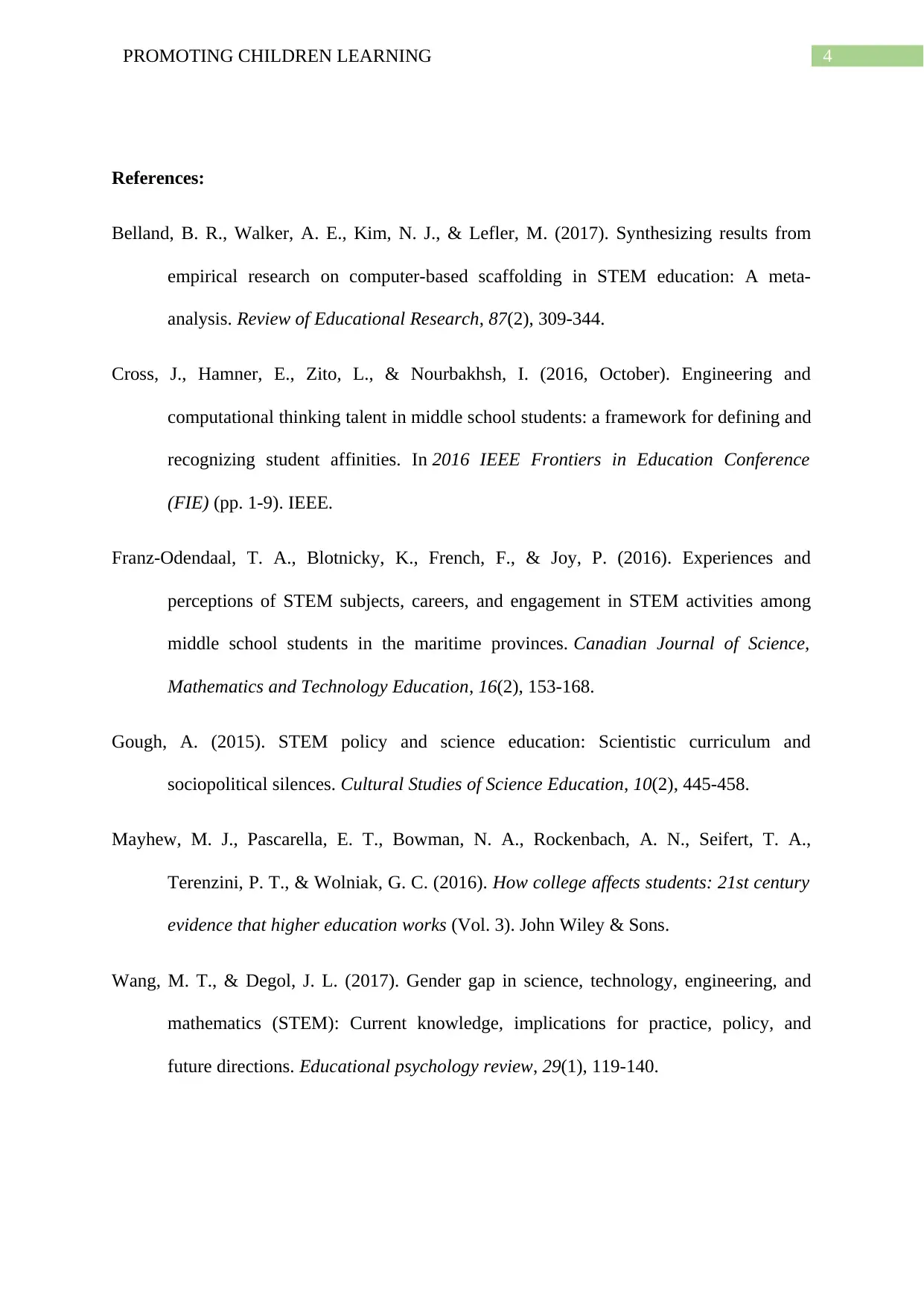Promoting Engineering Concepts and Skills in Early Childhood Education
VerifiedAdded on 2023/04/25
|5
|1183
|85
Discussion Board Post
AI Summary
This discussion post delves into the crucial role of engineering education in early childhood, exploring how to introduce engineering concepts, skills, and processes to young children. It emphasizes the importance of relevant teaching methods, considering constructivist approaches and problem-solving strategies. The post acknowledges the significance of children's unique learning styles, referencing poststructuralism and postmodernism to highlight the active role of children in their own learning. It integrates aspects of the Australian Curriculum, particularly the three strands and relevant outcomes, to provide a comprehensive framework for fostering engineering skills in early learners. The post underscores the significance of hands-on activities, encouraging experimentation and reflection, and promotes the development of critical thinking and real-world problem-solving abilities. The goal is to empower educators to create engaging and effective learning experiences that nurture children's natural curiosity and prepare them for future success in STEM fields. The post uses the provided readings to support the discussion.
1 out of 5












![[object Object]](/_next/static/media/star-bottom.7253800d.svg)